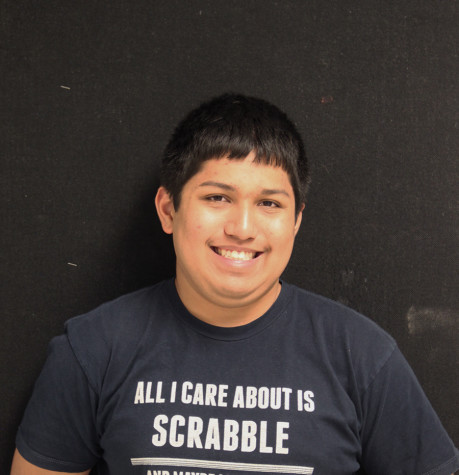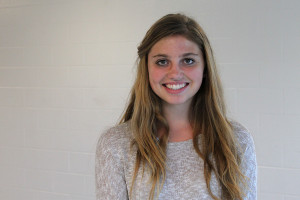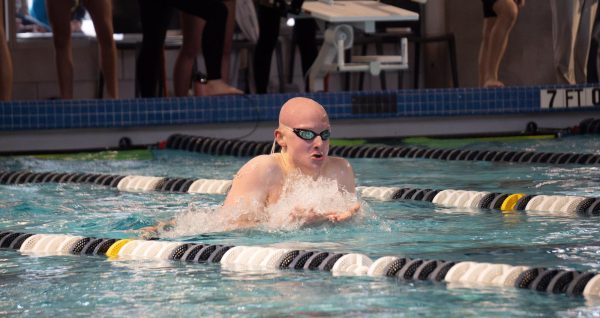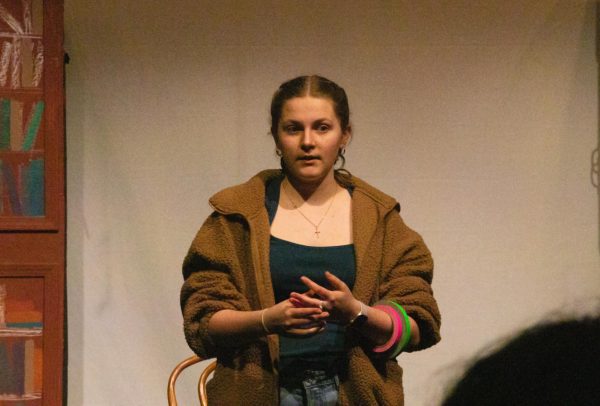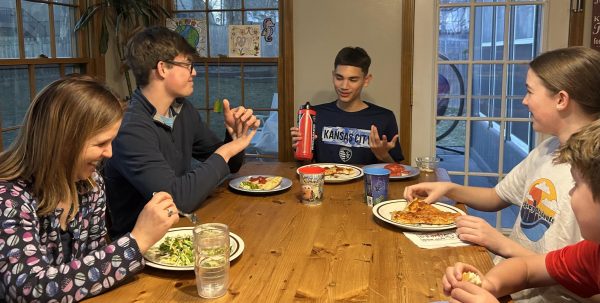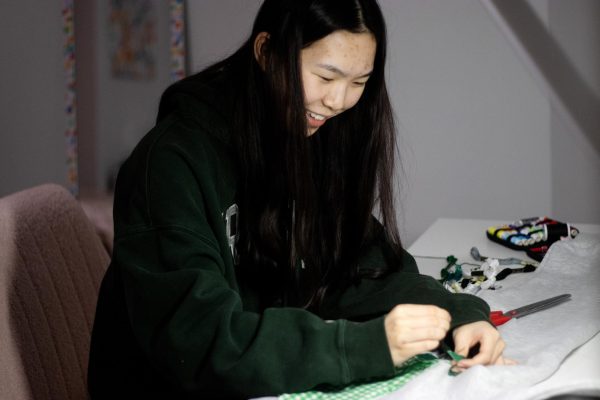Life without meat
Imagine picking food in a grocery store, but nothing contained animal products. There would be no meat, eggs or even honey. English Language Arts teacher Kyle Farrington and senior Sabrina White reflect on their experiences with a vegan diet.
_________________
A Vegan Teacher
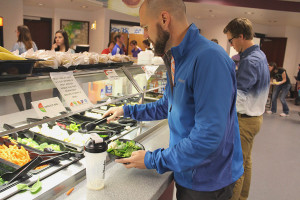
English Language Arts teacher Kyle Farrington does not eat meat, or any other animal products, at all. This lifestyle is known as veganism.
According to Farrington, however, he is not a true vegan. Other people, in addition to the diet, do not use any other animal products, including some types of clothes.
Farrington said he decided to become vegan after taking a health risk assessment for his insurance company three years ago. Even with all the exercise he did, the results showed that his cholesterol levels were high, and he noticed that he needed to make a change in his life.
“I had lost a bunch of weight, I was eating pretty healthy, and I was exercising a lot,” Farrington said. “I felt like I was in really good shape, and then [the results] came back and said I had high cholesterol. I thought that if I wanted to get rid of all that cholesterol, I’d need to do without basically any animal products.”
According to Farrington, it was not very hard to give up meat, but the process of eliminating dairy from his life was a challenge.
“There’s dairy in everything,” Farrington said. “The eggs thing is sneaky, too. It wasn’t hard to give them up since I don’t like eating them alone, but eggs are in everything.”
Browsing the supermarket was a challenge as well. According to Farrington, for the first year, the average amount of time he spent shopping for foods without animal-based ingredients was a lot longer than prior to his adaption to veganism.
“All of the sneaky ingredients that I try to avoid are usually listed as allergens,” Farrington said. “When I flip [the box] over and look at the ingredients, the easiest way to do that is at the bottom, where they have to bold and list allergens.”
Farrington said another challenge is sometimes ambiguity in the labels. The companies may label their products as organic or natural, but they are not always what they appear to be.
“The only bad stuff I have to watch out for sometimes is natural flavors, because a lot of times, that’s animal derived,” Farrington said. “[The manufacturers] don’t have to list what goes into [the product].”
Farrington said that he does find foods that he can enjoy while still fulfilling the requirements of a vegan diet.
“Almond milk is good because it’s fortified,” Farrington said. “It also has twice as much calcium. Proteins would be almost entirely based off of beans and quinoa. The grain group would [contain many different foods], as well as the vegetable and fruit groups.”
Farrington said that he has not found any other students with similar diets, but when someone is curious, he is somewhat reluctant to give out the information.
“I’m always worried that a kid will adapt a vegan diet to lose weight, which I don’t think is really healthy,” Farrington said. “I’m always worried that since kids don’t have control over what their parents buy, they won’t be able to eat a healthy diet. You can’t just eat vegetables all day and get everything that you need. I don’t want anyone to adapt [a vegan diet] and not take care of themselves.”
_______________
A Failed Vegan
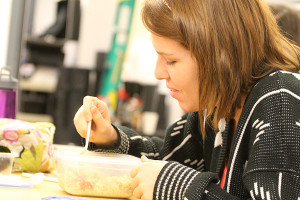
Senior Sabrina White once attempted to become a vegan when she saw a segment on television about animal cruelty, which inspired her during a summer two years ago.
“It sounded like a good idea to eat healthier and treat animals better,” White said. “I stopped doing that and was a vegan for three and a half months.”
White said she stopped being vegan when school started, since she lacked the responsibilities that came with a vegan lifestyle.
“It’s something you have to be willing to get used to,” White said. “I would be fine during the summer when I could make my own meals, but during the school year when I would get school lunches, it takes a lot more responsibility, and I just didn’t have that.”
According to White, it became hard to avoid her old favorite foods after the first few months of school.
“For the next two years, I would spend six months eating whatever I wanted,” White said. “The next month and a half, I’d try going vegan again. I probably quit and started three or four times.”
During those periods of eating with the vegan standards in place, White said she still had a variety of foods she could go to and enjoy.
“I had multiple recipe books,” White said. “I could make vegan Sloppy Joes, which have mushrooms instead of the meat. I could also make quinoa salad, which you could make taste like a chicken salad.”
The vegan journey ended for White when, according to her, she saw a guilty pleasure and was drawn in.
“I was walking to lunch, and I was craving pizza,” White said. “Since I had quit and gone back on so many times, it didn’t seem like such a big deal, so I got [pizza].”
White said she was eating in another room, when her classmates came in and were shocked.
“One of the [other students] saw me take a bite of the pizza,” White said. “She freaked out, and didn’t know what to do with the fact that I was eating something special. She was like, ‘What are you doing?’ and I responded, ‘I’m not vegan anymore!’ It’s not hard to quit. All you have to do is eat something not vegan.”


